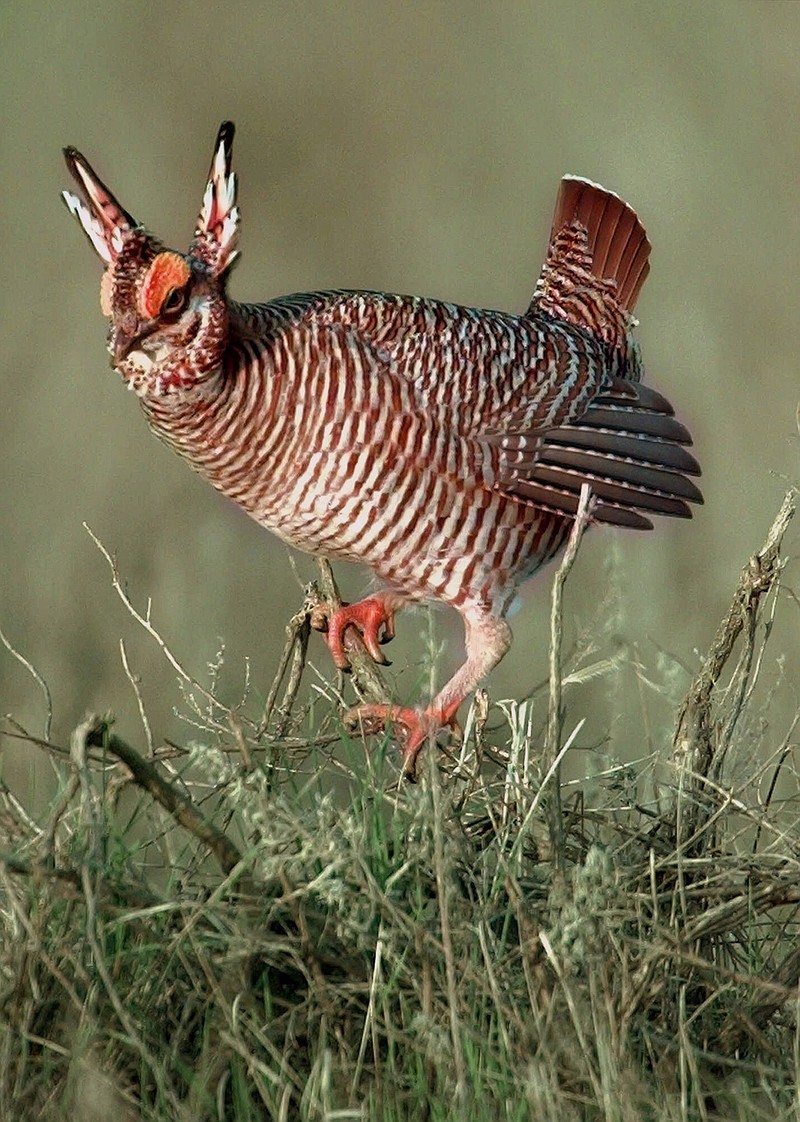ALBUQUERQUE, N.M.-The fight over a grouse found in pockets across the Great Plains is far from over as industry and state officials worried Tuesday that relisting the lesser prairie chicken as a federally protected species could mean hundreds of millions of dollars in added costs for oil and gas developers, renewable energy companies and farmers.
The lesser prairie chicken was removed from the threatened and endangered species list earlier this year following court rulings in Texas and a decision by government lawyers not to pursue an appeal.
A coalition of environmental groups filed a petition with the U.S. Fish and Wildlife Service late last week, saying there's new evidence that warrants listing the bird again.
The groups argue that key populations are in danger of extinction as climate change exacerbates problems caused by energy development, farming and other infrastructure such as roads and power lines.
Emergency protections are needed for isolated populations along the Texas-New Mexico border, in Colorado and western Kansas, the groups say.
"The same threats that warranted listing the lesser prairie chicken years ago are even more severe today," said Jason Rylander, an attorney for Defenders of Wildlife.
Rylander said there's little evidence that voluntary conservation programs are addressing the threats, suggesting that the Fish and Wildlife Service should promptly relist the species and develop a better strategy for protecting the bird.
The lesser prairie chicken's Great Plains habitat has shrunk by more than 80 percent since the 1800s, and its population by 99 percent.
It lives primarily in Kansas, but also in Texas, New Mexico, Oklahoma and Colorado. About 95 percent of the bird's range is on private lands.
Kansas Gov. Sam Brownback, a Republican, had been a vocal critic of the initial listing, arguing that drought caused a decline in the chicken's numbers.
"We will fight them. We fought them previously, successfully. The prairie chicken is back," Brownback said Tuesday. "As rain comes back, the prairie chickens have come back. The habitat is there."
To keep the bird off the endangered species list, the five states organized their own conservation program, offering economic incentives to landowners and companies that set aside land. Still, the Fish and Wildlife Service last year designated the lesser prairie chicken as threatened, one step beneath endangered status. The classification meant federal officials thought the bird soon would be in danger of extinction.
Oil and gas groups opposed the listing, saying it would impede operations and cost companies hundreds of millions of dollars in one of the country's most prolific basins - the Permian Basin, which stretches from West Texas into eastern New Mexico.
They took their case to federal court, where a judge found that the Fish and Wildlife failed to make a proper evaluation of the multistate conservation plan when it listed the lesser prairie chicken as threatened.
Despite giving up the court fight, the Fish and Wildlife Service has said the bird's status would be re-evaluated.
Wally Drangmeister, a spokesman for the New Mexico Oil and Gas Association, said the groups are not taking into consideration the conservation efforts made by the states and private partners in recent years.
Based on aerial surveys, the Western Association of Fish and Wildlife Agencies reported a 25 percent increase in lesser prairie chicken numbers from 2014 to 2015. That followed a 20 percent increase over the previous year.
"It's a relentless attack," he said of the latest effort to list the bird. "It just seems like it's a tool and technique to push development and industry and agriculture off the land as opposed to really addressing the issue."
Industry experts say the Permian is among the premier basins for activity and interest, and any chilling effect on drilling there could put a bigger dent in New Mexico's finances, which depend heavily on oil and gas revenues and related taxes. State lawmakers are already dealing with a substantial budget shortfall that has resulted from weak energy commodity prices.

